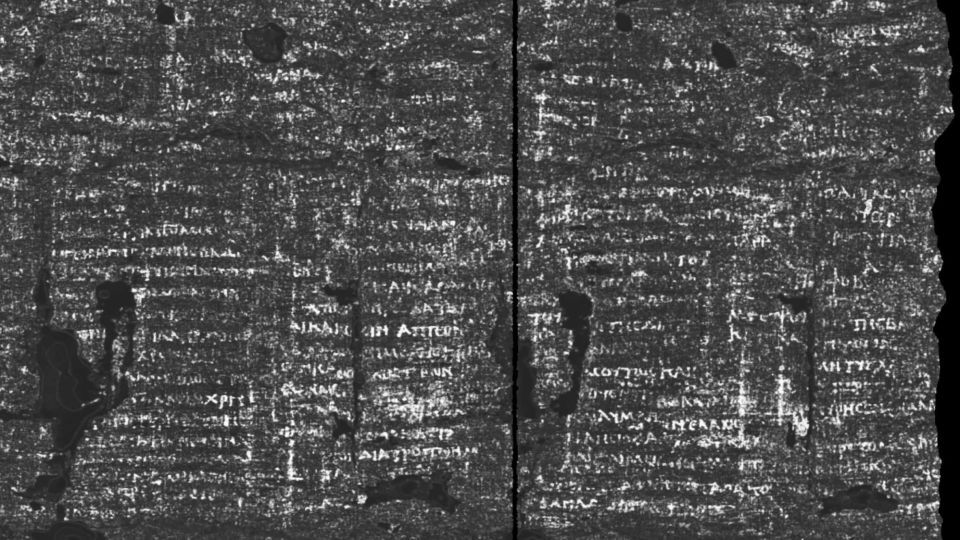Unlocking Ancient Secrets with Modern Tech
The allure of solving history’s greatest puzzles has long captivated scientists, but today’s breakthroughs often come from labs rather than fedora-clad adventurers. Take the Herculaneum scrolls—charred, ancient Roman texts buried by Mount Vesuvius in AD 79. For centuries, these fragile papyri resisted decoding. Now, artificial intelligence and advanced imaging have cracked the code. In a striking achievement, researchers decoded the word “disgust” from one scroll, part of the Vesuvius Challenge, a global competition to virtually unroll these artifacts. The ink’s mysterious composition, detectable through X-rays, hints at ancient craftsmanship. This fusion of technology and scholarship is peeling back layers of history, revealing insights into daily life, philosophy, and culture from a civilization frozen in time.
Asteroids, Earth, and the Cosmic “What If?”
While asteroids like Bennu grab headlines for their tiny but terrifying chance of colliding with Earth, scientists emphasize caution over panic. A new study suggests a Bennu strike—though a 1 in 2,700 long shot—could trigger a years-long global winter, threatening food systems. Similarly, the recently spotted asteroid 2024 YR4 has a 2.2% chance of impact in 2032, but astronomers stress these odds will likely plummet with more data. Meanwhile, Elon Musk’s cherry-red Tesla Roadster, drifting in space since 2018, was briefly mistaken for an asteroid, highlighting the challenges of tracking near-Earth objects. These cosmic close calls remind us of our planetary vulnerability—and the importance of vigilance in safeguarding our future.
A King’s Lost Palace Resurfaces
Nearly 1,000 years after the Battle of Hastings reshaped England’s destiny, archaeologists have pinpointed the “lost” palace of Harold Godwinson, the last Anglo-Saxon king. Using ground-penetrating radar beneath a grand residence in Bosham, they uncovered remnants of the hall depicted in the Bayeux Tapestry—a medieval embroidery chronicling William the Conqueror’s 1066 victory. The discovery offers a tangible link to a pivotal era, revealing how power and architecture intertwined. The tapestry itself, stretching over 200 feet, immortalizes Harold’s journey to Bosham, where he feasted before his fateful clash. This find bridges art and archaeology, proving that even centuries-old mysteries can still yield secrets.
The Moon’s Hidden History and Future Missions
The moon’s far side—eternally turned from Earth—holds clues to our solar system’s violent past. A colossal crater near the lunar south pole, surrounded by vast grooves, may have formed 3.8 billion years ago when a massive comet or asteroid struck, carving Grand Canyon-sized valleys in mere minutes. Meanwhile, China’s Chang’e-7 mission, set for 2025, aims to deploy a flying robot to search for water in this shadowed region. Such discoveries could fuel future lunar colonies, aligning with China’s goal to land astronauts there by 2030. As nations race to unlock the moon’s resources, its silent surface continues to whisper tales of cosmic collisions and human ambition.
A Frog’s Unusual Path to Survival
In a London Zoo, 11 male Darwin’s frogs recently became unlikely heroes for their species. These tiny, endangered amphibians—native to Chile—have a unique survival strategy: fathers carry tadpoles in their vocal sacs, spitting out fully formed froglets. After a 7,000-mile journey to escape a deadly fungus ravaging amphibians worldwide, these frogs successfully bred 33 offspring, offering hope for their survival. Elsewhere, a baby swell shark’s unexpected arrival at a Louisiana aquarium—without any male sharks present—left scientists baffled, showcasing nature’s endless capacity to surprise.
Wonders From Skies to Seas
From Antarctica’s icy plains comes the 68 million-year-old skull of the oldest modern bird, a duck-sized creature with a toothless beak—a missing link in avian evolution. Light pollution, meanwhile, obscures the Milky Way for one-third of humanity, sparking grassroots efforts to reclaim dark skies. In a nod to our primate cousins, great apes demonstrated “theory of mind,” recognizing human ignorance and offering help—a cognitive trait once deemed uniquely human. And in physics, turbulence—the chaotic flow of air and water—is finally being modeled, potentially revolutionizing airplane design. These discoveries remind us that curiosity, whether aimed at the cosmos or ancient scrolls, continues to redefine our understanding of the world and our place within it.
Curious for more? Dive deeper into space, science, and history with CNN’s Wonder Theory newsletter, delivering awe-inspiring stories straight to your inbox.
